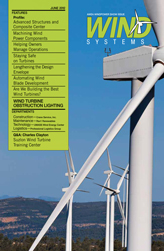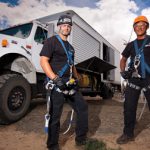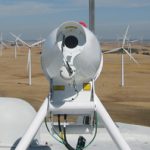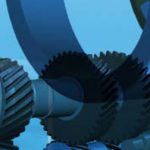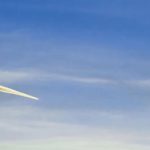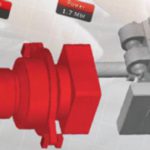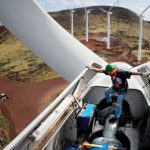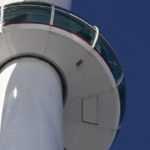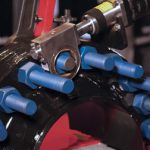At EWEA, Copenhagen, UK-based Romax Wind launched a new software and service platform named InSight, which it claims will improve return on wind assets by up to six per cent.
“Through close collaboration with operators, Romax was aware of the frustration in planning maintenance. There was a feeling that they were always reacting to failures,” says Nigel Parlor, Business Development Manager at Romax Technology. “Not knowing when gearboxes might fail made business planning difficult.” Figure 1
Condition Monitoring Systems in the past have provided just a few months alert before a failure. Operators wanted more warning and InSight was created to tackle these operator challenges.
Developed over five years with more than 20 years of engineering know-how, InSight is designed to deliver a change in enabling wind asset owners to visualize the fleet condition and predict the remaining operating life of wind turbines down to subcomponent level.
“Romax’s belief is that if you want a wind farm, or any other power generation asset, to achieve maximum output, you need to know both its current condition and what its future condition will be,” Parlor said. “You also need to know the necessary changes required in order to enhance future performance.”
The ability to identify, predict and resolve maintenance issues at an early stage before they become significant is directly related to wind asset profitability and return on investment.
Cost savings in operations and maintenance have a significant impact on reducing the Cost of Energy (CoE), though industry data shows that improvements in Availability have a significantly larger impact. By focusing on improvements in availability, the resulting CoE reductions can be more than 10 times as effective in reducing CoE than on OPEX savings.
“InSight is bold – we are attempting to ‘model out’ the reasons for failure and create predictive maintenance (PdM) tools that are accurate, reliable and easy to use.
It is also important to ensure that maintenance is undertaken at the optimum time. InSight has been developed to meet these requirements.”
InSight comprises three core elements. InSight Inspection and Analysis draws on experience in forensic engineering, studying machine behavior and field services to tackle maintenance issues. InSight iDS (Intelligent Diagnostic System is a powerful diagnostics platform, which provides precise visualization of fleet condition to asset managers and monitoring analysts.
InSight SCADA provides near real time visualization of fleet performance and interfaces with ERP systems such as SAP to enable optimised work scheduling and commercial control.
IDS is hardware independent, which means it can integrate data transmitted from multiple manufacturers’ CMS equipment, presenting it in a single, unified and easy to understand dashboard. Our system display allows trends and potential problems to be identified far more quickly and easily than is possible via multiple system interfaces.
With more than two decades experience of modelling, analysing, and understanding machine behavior, and the vibration signatures of rotating machinery, Romax engineers incorporated advanced diagnostic rules into IDS, which identify tell-tale sign combinations long before they turn into serious machine faults. IDS is preloaded with diagnostic rules covering many major wind turbine manufacturers’ machines and model type faults.
On-screen, InSight displays an ‘alarm’ for each turbine within a wind farm, as well as alarms for the gear, bearing, shaft and sensors of every drivetrain, with detailed diagnosis results of all alarms shown in a ‘trend’ graph.
CMS alone is limited in its ability to pinpoint the location of potential faults, with most only being able to indicate the sensor closest to the irregular vibration signature. Vibration analysis experts may also spend many hours identifying and locating the most common faults using CMS data.
The InSight system is currently geared towards conventional planetary drivetrains, although software for direct-drive transmissions is under development. Figure 2
Further development of InSight will incorporate condition monitoring of elements outside the drivetrain, with the next generation taking in componentry, including rotor blade pitch and yaw systems.
E.ON’s 30-turbine Scroby Sands project is the UK’s first offshore wind farm to have expired turbine warranties and be managed independently. This is an important early application of InSight.
“The InSight philosophy is based on experience and data collected over the past 20 years using some very clever algorithms and information,” Parlor said. “We can give our clients a far greater insight into their assets and significantly increase their yield.”
As turbines become larger and more sophisticated, operational costs and the impact on revenue resulting from bad decision-making will be significant. Offshore wind farms involve an enormous investment and maintenance is challenging. With 0.1 to 0.2 failures per year (1 failure per 5 to 10 years), the fact is the drivetrain failure rate is too high for offshore turbines, Parlor said.
With the offshore wind power market forecast to increase to 9.6 per cent of total installed capacity by 2015, InSight can make a serious contribution to operators.
Primary Causes of Turbine Failure
With the first large turbines (multi MW turbines) coming out of the warranty period, there are a number of reliability issues appearing. The main area of turbine downtime is the drivetrain, which includes the gearbox, generator and the main bearings.
There are three primary causes of failure. The first arises from maintenance issues. This is not always the fault of the operator; there are occasions when turbines do not lend themselves to component maintenance. An example is when a gearbox is well designed but the subsystem requiring maintenance is not. Similarly, if during assembly, parts were not aligned properly, future problems may arise. Figure 3
Poor siting can be a further cause of turbine reliability issues, particularly where turbines are subjected to higher than necessary wind loads.
A third area is related to design flaws where a product line has problems that result in multiple failures downstream. Blade issues are not so common, but they present a significant expense when they do occur because the remedial work causes downtime.
Offshore operations requiring a blade swap can result in high costs.
Romax is developing products that will help schedule the flow of maintenance and quality assurance of maintenance procedures to allow operators to document and monitor both improvements and defects identified in the manufacturing process. Figure 4
Giving the Operator Control
“The InSight solution comes from the technology side, rather than the service or product side” Parlor said. “This means that we are offering an independent view. This is an end-to-end solution, from a condition-monitoring hardware solution to a fleet monitoring service. We help clients put the processes in place and provide the training they need in order to operate their assets to optimum capacity. Our solutions give the owner control of everything rather than being tied to one service provider. Owner-operators can understand their assets and manage them on their own terms, so they are not tied into a hardware vendor.”
A Critical Time
As the first generation of 1.5 to 2.5 MW class wind turbines enters maturity, there is increasing evidence of main bearing failures across a variety of turbine models, turbine manufacturers and bearing types. Failures have been experienced by operators in the US, Europe and Asia and in many cases a number of failure modes and symptoms have been found to be consistent across the fleets.
The nature of these machines is very different to smaller ones in terms of cost to operate, size and revenue generated. Technology levels are higher as are the value of assets. Correct management is more important than ever. Figure 5
Romax also has a background in the design of drivetrains for multi-MW turbines, and experience in offshore wind farm product manufacturing that helps them solve customer problems.



















